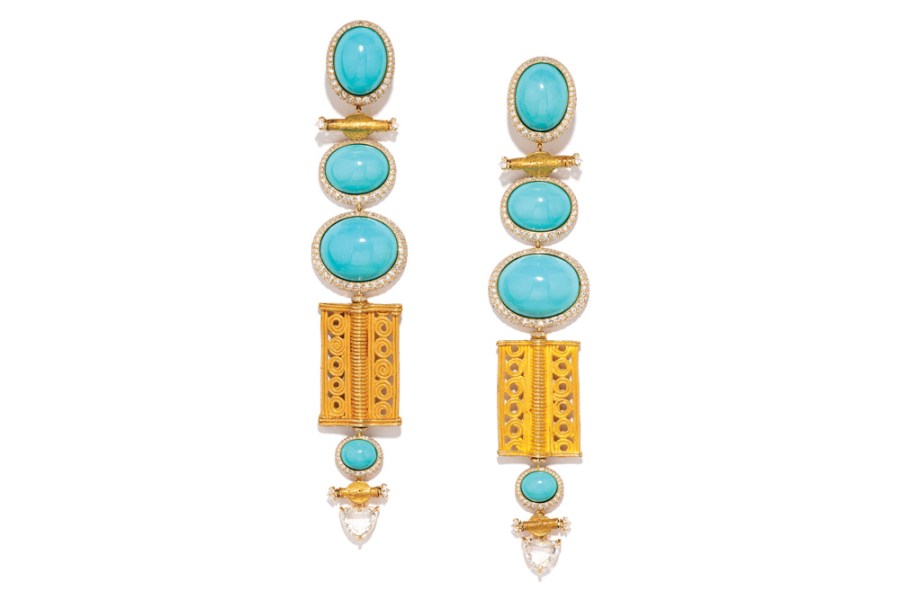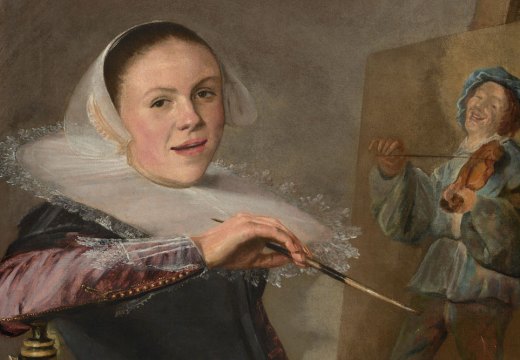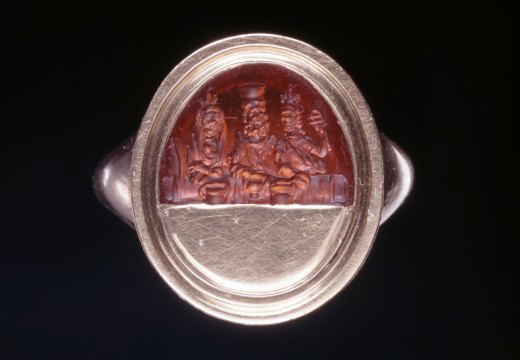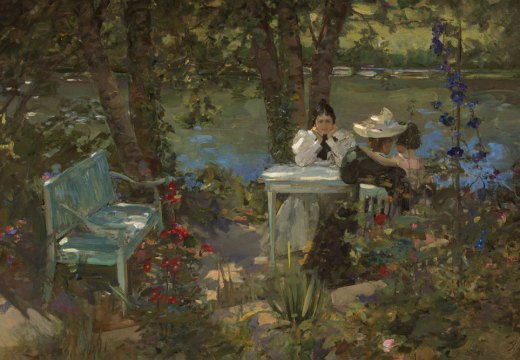From the October 2023 issue of Apollo. Preview and subscribe here.
The increased presence of contemporary jewellers at art and antique fairs, such as TEFAF and PAD, seems to have settled the long-standing debate on whether jewellery belongs to the world of art. For those who still harbour doubts about this, a glimpse at the work of London-based jewellery artist Glenn Spiro, who sets traditional materials in imaginative, avant-garde designs, will dispel any doubts.
Forget the gobstopper-like gems surrounded by a sprinkle of diamonds typically associated with haute joaillerie. Instead, think of pendants made from 3,000-year-old Egyptian faience ceramic tiles set with aquamarine or drop-shaped amber beads to form a bold, flexible bangle.
As Edgar Degas observed, art isn’t merely about what artists see, but it is more about what it inspires others to see. Glenn Spiro’s pieces ask profound questions about pre-conceived notions of preciousness and the significance of jewellery itself, as well as eliciting an emotional response.
Born in east London, Spiro entered the jewellery world at the age of 15 as an apprentice at the Cartier-owned English Artworks located in Hatton Garden – the centre of the London jewellery trade – and subsequently moved into various facets of the trade as a dealer, designer, and manufacturer of exceptionally high-end pieces. In 1994 he joined Christie’s where he worked as a senior director and international specialist until 2002. It was during this time that he honed his expertise and ability to spot exceptional gems.
In 2014, Spiro embarked on his most personal and ambitious endeavour by establishing his own jewellery atelier, which, since 2016, has been operating from a historic salon in Mayfair, the former studio of fashion designer Norman Hartnell. Spiro deliberately decided to stay small, avoid the limelight and work for a select group of collectors, under his house name G by Glenn Spiro.
Spiro’s new collection, Materials of the Old World, which will be introduced at PAD (10–15 October), explores one of the artist’s favourite themes: the dialogue between one-of-a-kind ancient artefacts and con- temporary designs.
At the heart of the collection are the geometrical golden elements featuring idiosyncratic shapes and patterns handcrafted between the 17th and the 19th century by the Baule people – an Akan population originally from Ghana who are now the predominant ethnicity in Côte d’Ivoire.
‘We’ve been focused on ancient materials for a long time,’ says Spiro, who, since 2015, has worked with his son Joe. ‘We look all around for inspiration. Materials of the Old World is a collection of different periods that reinterprets those works. During our research,’ he adds, ‘a good friend and respected dealer in ancient African and eastern antiquities came to show us some Baule necklaces, and it clicked.’ Spiro explains that Baule jewellery is often made in brass or dense wood, sometimes featuring a black patina, while the finest was made with nine-carat gold. ‘The material doesn’t really matter. It’s the craftsmanship that was inspiring,’ the designer says.
In one of his creations, Spiro combines two rectangular, patterned 9k gold elements and four small discs, intersected by diamond- tipped sticks – a total of six Baule elements – surrounding cabochon-cut oval turquoise gems encircled by diamonds, resulting in a pair of exquisite pendant earrings. A golden Baule disc, embellished with old- mine cut diamonds, flanked by two tubular Baule elements, takes centre stage in a choker linked to two Tubogas-style rigid chains.
‘Incorporating these Baule elements has allowed us to design something that is truly a unique body of work. It looks like nothing else, but it’s so elegant, the colours and materials are truly special.’ Spiro says. ‘I must say the finish and result took us by quite a surprise, but I’m excited to see people’s interaction. In the end, they’ll have the final say.’
According to Melanie Grant, executive director at the Responsible Jewellery Council and author of Coveted (2020), a book exploring the relationship between jewellery and art, ‘Glenn’s use of ancient artefacts goes one step further repositioning antiquity as wearable sculpture.’
‘Not all jewellery is art,’ Grant explains. ‘Most of it is designed to be sold as an accessory, but when a piece is handmade, unique or bespoke and of exceptional quality, then it can transcend [its craft]. Spiro’s work has evolved over the years and become much more focused on ideas.’ Jewels may indeed be small, but they often hold big surprises – especially those found at art fairs.
From the October 2023 issue of Apollo. Preview and subscribe here.
Unlimited access from just $16 every 3 months
Subscribe to get unlimited and exclusive access to the top art stories, interviews and exhibition reviews.














![Masterpiece [Re]discovery 2022. Photo: Ben Fisher Photography, courtesy of Masterpiece London](http://www.apollo-magazine.com/wp-content/uploads/2022/07/MPL2022_4263.jpg)
It’s time for the government of London to return to its rightful home